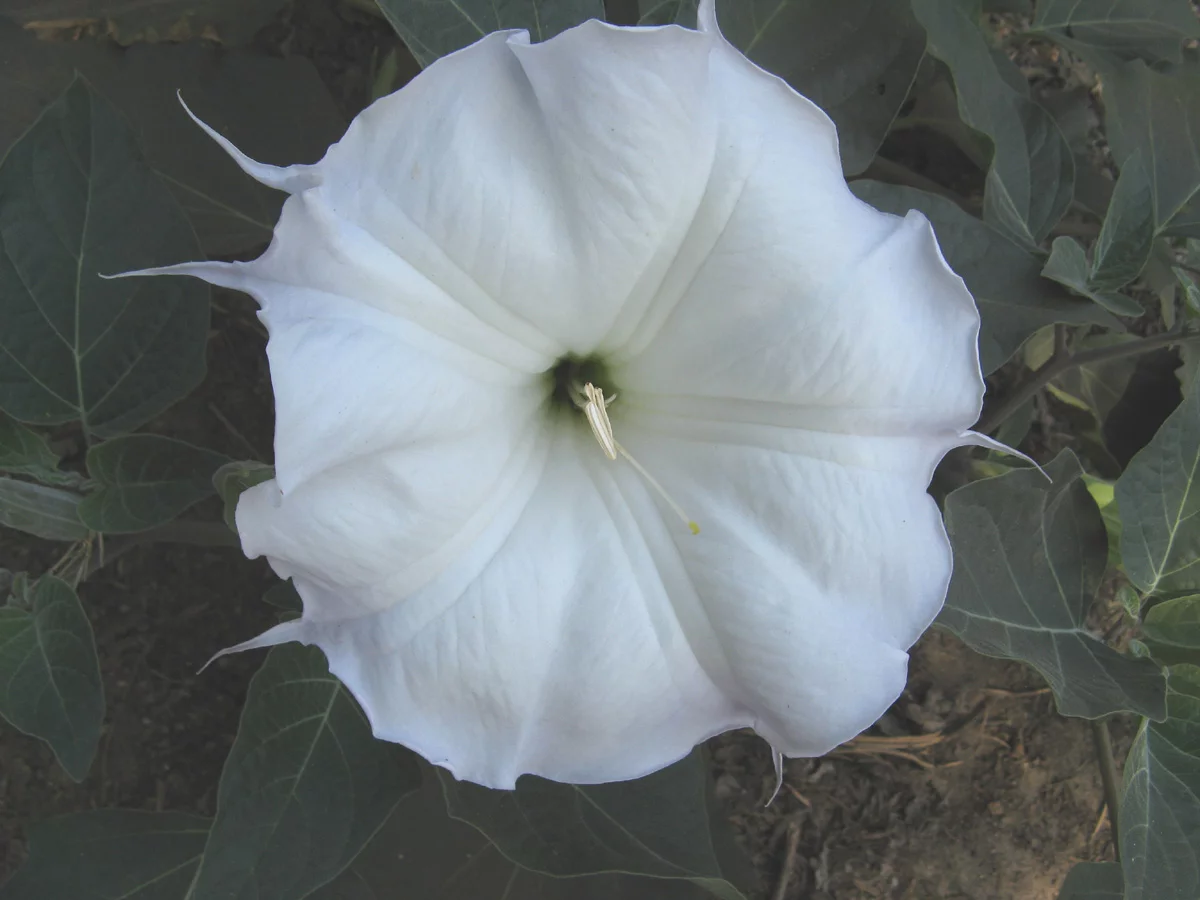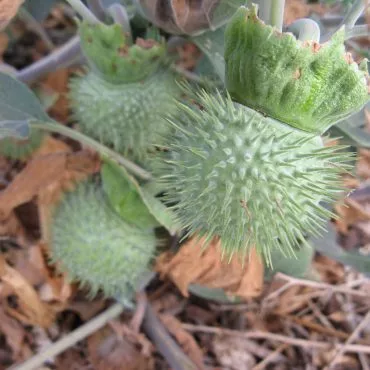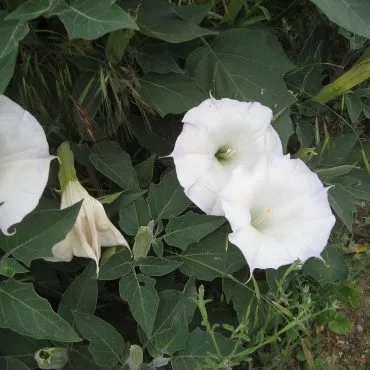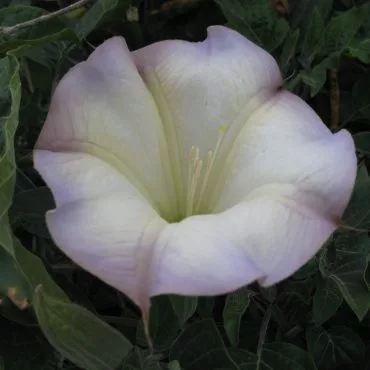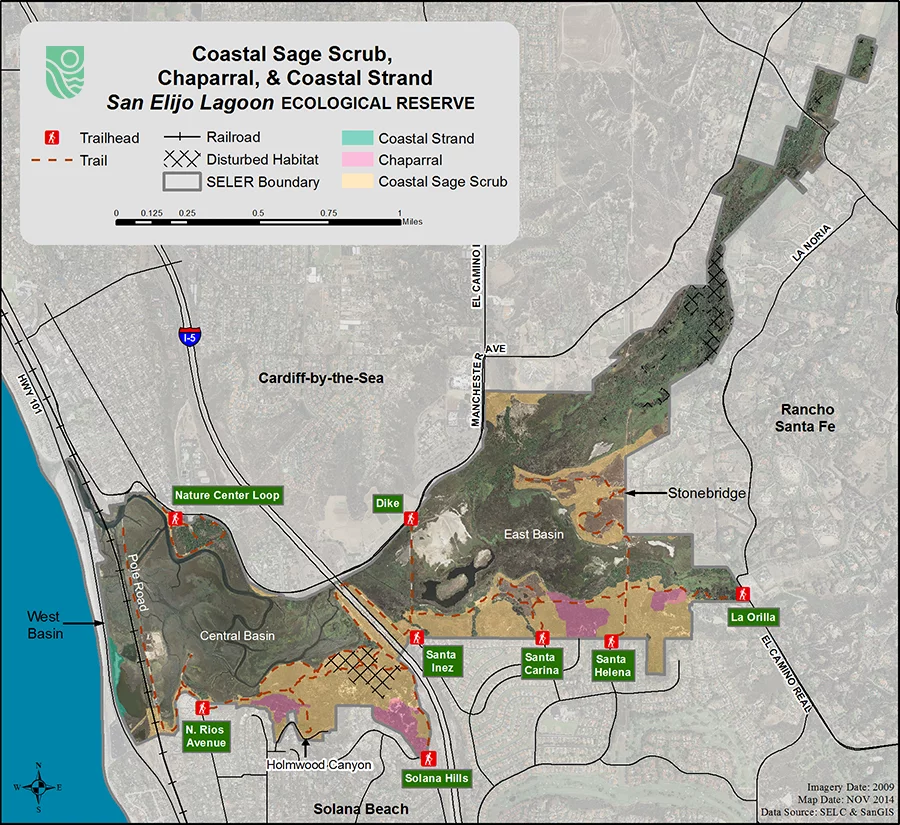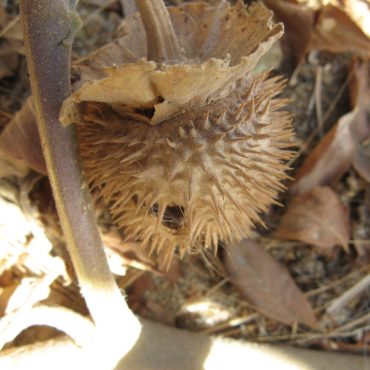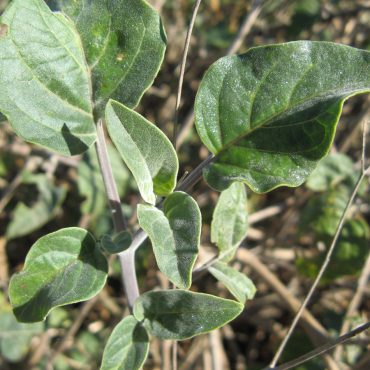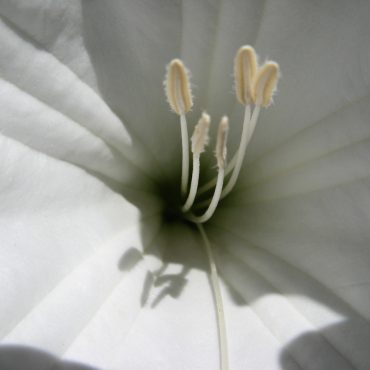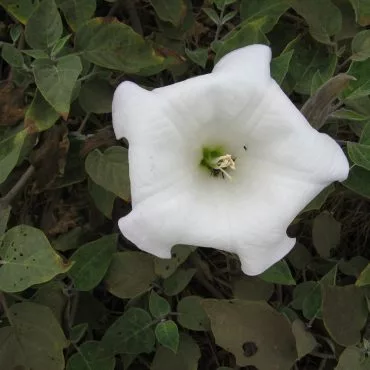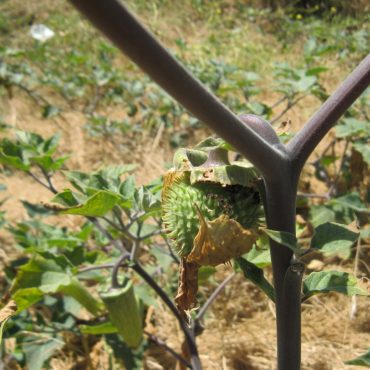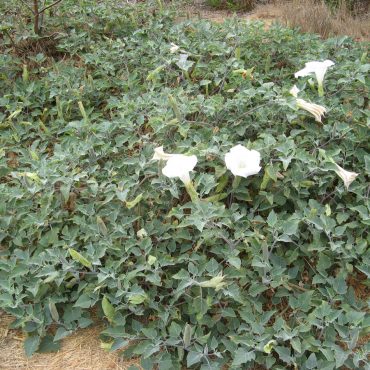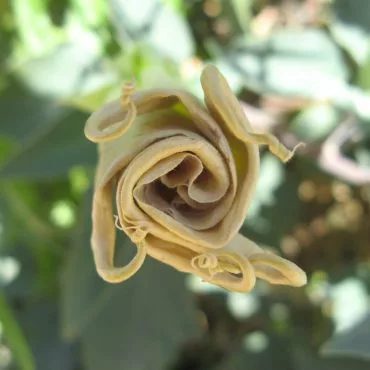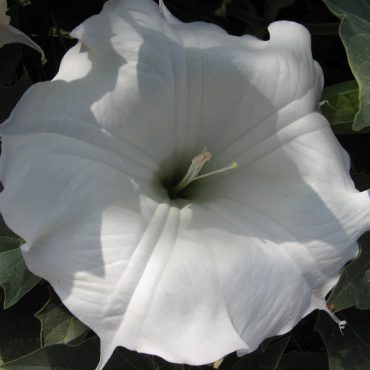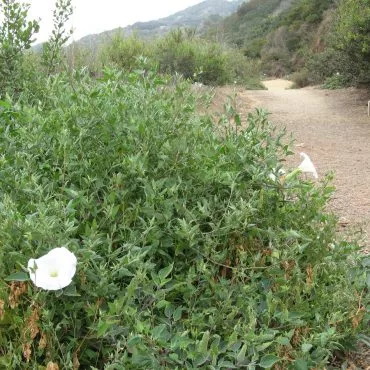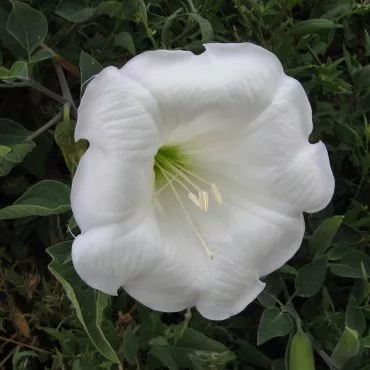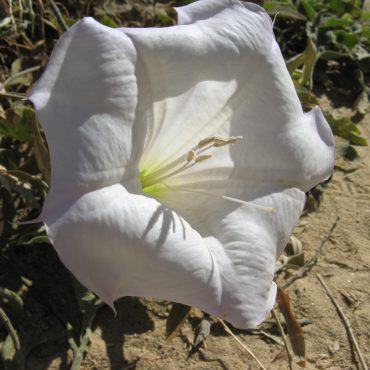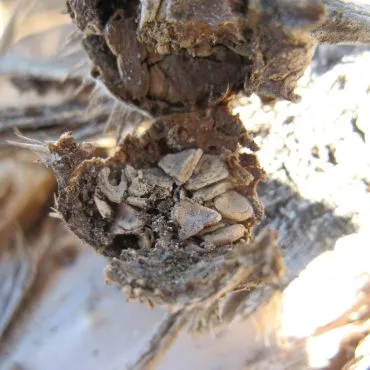Human Uses
Since ancient times, sacred datura and its relatives have been used for medicinal and ceremonial purposes, by holy men and medicine men, by sorcerers and witches.58 The pounded root was an all-purpose cure, good for cuts, bruises and gunshot wounds.34 Gamblers kept a root in their pocket to enable them to foresee the cards and guide their bets.34
Native Americans in southern California also used sacred datura for medicinal and ceremonial purposes. It was the most important medicinal plant of the Chumash.15 The Luiseño used the smoke to relieve the pain of rheumatism and earaches.17 Medicine men of the Chumash, Luiseño, and Kumeyaay* used sacred datura to produce hallucinations during puberty rites.15,17,18 A young Chumash boy was given a liquid from pounded datura root. The resulting dreams revealed a spirit guardian, or “dream helper” to give him guidance in the future.15
In spite of its extreme toxicity, sacred datura is a popular garden plant.24 The International Brugmansia and Datura Society74 is dedicated to the culture and cultivation of Datura and two closely related genera.
A Note: The Human Use section of the Plant Guide attempts to present a brief glimpse of the common or interesting ways our plants have been used by past or present peoples, with an emphasis on our local inhabitants. Each use is accompanied by one or more references, primarily from the available literature. Local indigenous peoples, the tribes of the Kumeyaay*, who used local botanical resources for hundreds of years, and continue to do so, are not well represented in this section, because we are working to incorporate new information. We welcome help filling this gap. If you have any suggestions, please contact us.
* “San Diego County is the heart of 13 federally recognized Kumeyaay tribes and five that reside in Northern Baja California, Mexico. These numbers do not reflect state-recognized and unrecognized tribal groups who also live in the area today,” Jacob Alvarado Waipuk. The Kumeyaay have lived in this region for more than 10,000 years.

